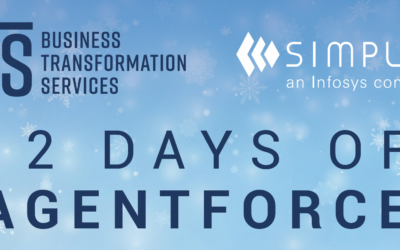It was exactly two years ago that our lives completely changed in an instance—COVID-19 had sounded all the alarms, the WHO officially declared it a pandemic, and we watched businesses of every size in every part of the globe announce their plans to press on via remote and hybrid work options.
But not only did we merely watch this happen. Many of us were the very guinea pigs suddenly thrust into this grand experiment: what will happen when the global workforce goes virtual for an indeterminate amount of time?
The short answer for most of us is, well, we got used to not knowing. Not knowing how we’d juggle homebound kids and homebound spouses with homebound work. Not knowing if the stores would have enough supplies for us to hunker down comfortably. Not knowing when it would be safe to visit with friends and relatives again. Not knowing if our jobs could afford to keep us on their payroll. Not knowing when any of this would all return to normal—or, better put, not even knowing what “normal” really meant anymore. Unsurprisingly, adult anxiety and depression rates were four times higher between summer 2020 and summer 2021.
Quietly, however, something more encouraging happened alongside all the uncertainty: we remembered some of our most basic human needs, and we found more innovative ways to meet those needs. We learned 1) that purpose-driven communication from leaders is an ongoing necessity no matter the organization’s industry, size, or background, and 2) that we are better employees and better people when we have more moments of genuine connection.
We need leaders who communicate purpose—and do so repeatedly
With so many areas of life turned upside down with the pandemic, it became increasingly important for the everyday worker to find a reliable, clear purpose wherever possible. And work was one of the first places we went searching for it. Unfortunately for some organizations, this led to many people leaving their jobs searching for greater purpose elsewhere, or what is now being dubbed the Great Resignation—4.4 million Americans resigned in September 2021 alone.
But other companies didn’t experience quite a dramatic drop in headcount, and perhaps that’s because they already had something critical for the pandemic era and beyond: purpose-driven messaging from leaders. Whether employees have remained with their current employers or have gone looking for somewhere new, their motivations to stay or leave both revolved around finding a sense of value and purpose through their employment.
People want to be confident that the time and effort they put into work is truly valued. We each want to feel our contributions are part of a larger, purposeful mission. Managers have learned gradually throughout the pandemic the importance of communicating this mission and clearly connecting it to each individual’s workload.
“We’re asking the middle layer of managers to perform in a much different way,” said Karen Mangia, Salesforce vice president of customer and market insights, and that includes communicating broad objectives to each team member while simultaneously staying aware of each team member’s personal well-being.
Leaders who have mastered the art of inspiring and motivating with repeating refrains of the organization’s purpose-driven mission are the leaders we need. Those are the leaders we need to feel a motivating sense of belonging and value from our employment—whether in office, behind the screen, or juggling a hybrid schedule. That’s why today’s executives need to know their company story and pass it on to their managers for retaining headcount and enthusiasm in the new work landscape.
We all do better with more connection—and it’s easier than you think
Whether it’s chatting with work friends and mentors, imaginary play breaks with the kids, dog walks, or a friendly discussion about the crazy weather with your neighborhood barista, our days are easier when we feel seen by the people around us—virtual or not. And these moments of being seen don’t have to be big or dramatic. It’s often the simplest things that make a huge difference: That moment when a coworker not only remembers the house project you’re working on or your kid’s big soccer game but also eagerly asks about it. Or, when the barista notices the quirky step-by-step ritual you always perform after they hand you your drink (two quick shakes of sugar and a gentle counterclockwise swirl of the cup as you secure the lid). These are some of the small but gratifying human moments of connection we are fueled by.
Simply stated, we’re all waiting to be noticed. And that’s why creating outlets to momentarily pause the professional to-do list and instead just connect with and notice each other on a human level makes for happier, more productive employees. Work is now not just bearable but genuinely enjoyable.
For the Simplus work culture, we’ve taken what was already a remote environment before the pandemic and simply increased what we do best: connecting with each other virtually. Here are some of the ways we do that:
—Themed company meetings that prompt everyone to share something quick and personal (favorite snack, funny t-shirt, and wildest travel story are just some of our recent favorites)
—Slack channels for every hobby or interest under the sun (e.g., #movies/tv, #cars, #dogs, #workingmoms, #hiking, #magicthegathering)
—Fluency in only the funniest memes and gifs as a secondary language for quick responses
—Individual employee spotlights regularly featured in company meetings
—Quarterly company-wide activities with expert instructors or performers (we’ve had magicians, chefs, and water cooler painters all share their talents with us)
—An active company-wide #shoutout channel for everything from company sales deals to birth announcements for our team members’ new babies
—Team water cooler chats over Zoom during lunch break
It’s through these channels that we learn interesting details about our team members; There’s those who used to wire components backstage for Van Halen and AC/DC, those who are passionate about building community gardens in their spare time, or those who obsessively track their progress watching everything on the American Film Institute’s Top 100. It’s also through these outlets for connection that we learn about teammates in need or experiencing tragedy. And, sure enough, team members quickly step up without being asked to raise funds, send flowers, and personally message—outside of work chats—to support.
Through these various means of connection, our Simplus family has grown stronger, maintaining a small startup closeness despite the continuously increasing headcount. Managers feel they genuinely know their direct reports, and direct reports feel they can talk to their managers as equals—not just hierarchical bosses. We feel comfortable being ourselves and sharing the good, the bad, or just the completely random with each other to get through the day.
Everyone has their coping habits, their obscure obsessions, their preoccupying worries about the meaning of life… and to lovingly tease and recognize those quirks in each other is an easy, natural way to connect on a meaningful level. It’s also how we realize that while, yes, we’re beautifully diverse, we’re also pretty similar: we’re all busy chasing dreams at work and in life, we’re all easily distracted by our favorite things, and, well, we’re all maybe a little neurotic. As the ultimate example of unlikely connections—The Breakfast Club—once opined, “We’re all pretty bizarre. Some of us are just better at hiding it, that’s all.”
But perhaps, in our newly remote and virtual world, we’ve gone one step further: we’ve realized we don’t even want to try hiding it. We’ve realized that we do our best work and our best living when we are fully, authentically ourselves—both on and off the Zoom calls.















0 Comments